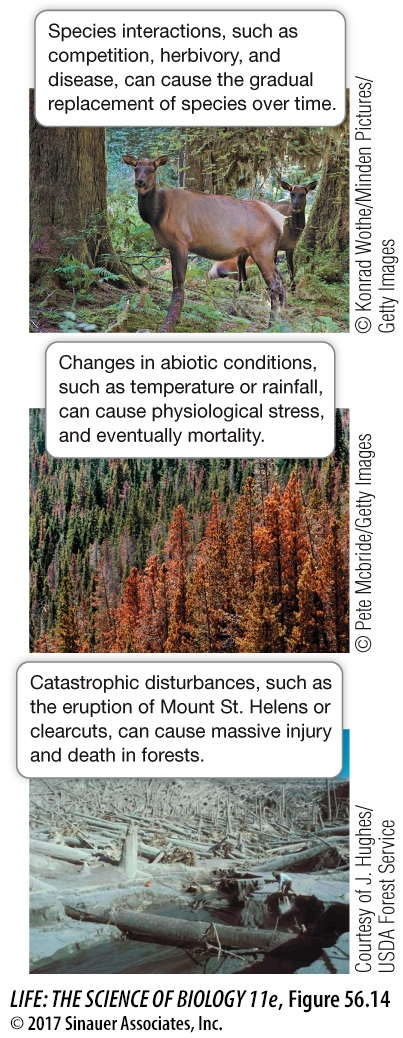key concept 56.4 Communities Are Always Changing
Imagine that you could look back in time and observe the change in a typical forest on Mount St. Helens (Figure 56.14). Over the last few decades, you would have seen both subtle and catastrophic changes. Subtle changes would involve a slow replacement in species composition as a consequence of competition, predation, and facilitation. More catastrophic changes would include volcanic eruptions and deforestation, resulting in the destruction of some species and replacement with others over time. The community at any one time is the result of these various changes both natural and human-

1217
focus your learning
Community succession is caused by factors that induce change, including disturbance and/or stress.
Communities recover from a disturbance through the process of succession, which results in a climax community.
Primary succession occurs after a catastrophic disturbance whereas secondary succession occurs after a disturbance when most but not all organisms have been destroyed.
Successional changes in a community are not necessarily predictable or repeatable, and may result in alternative states.